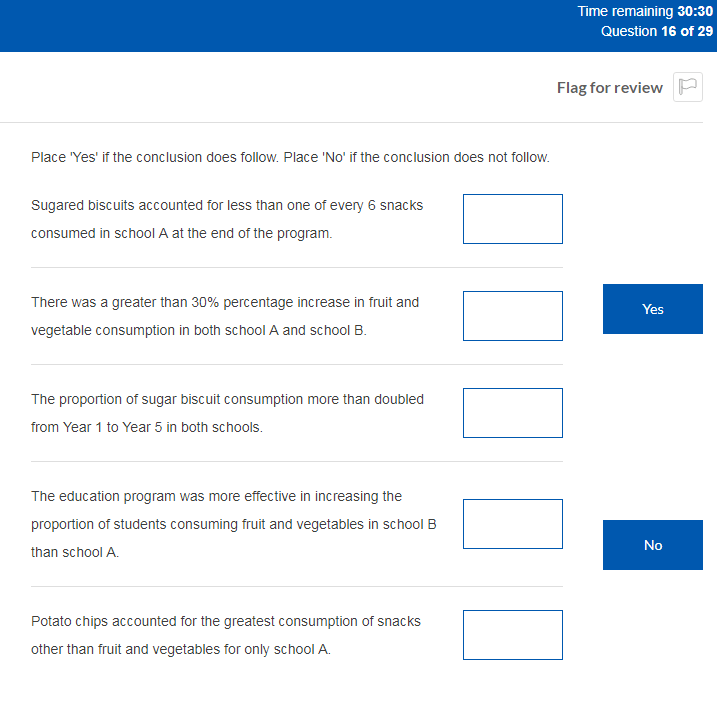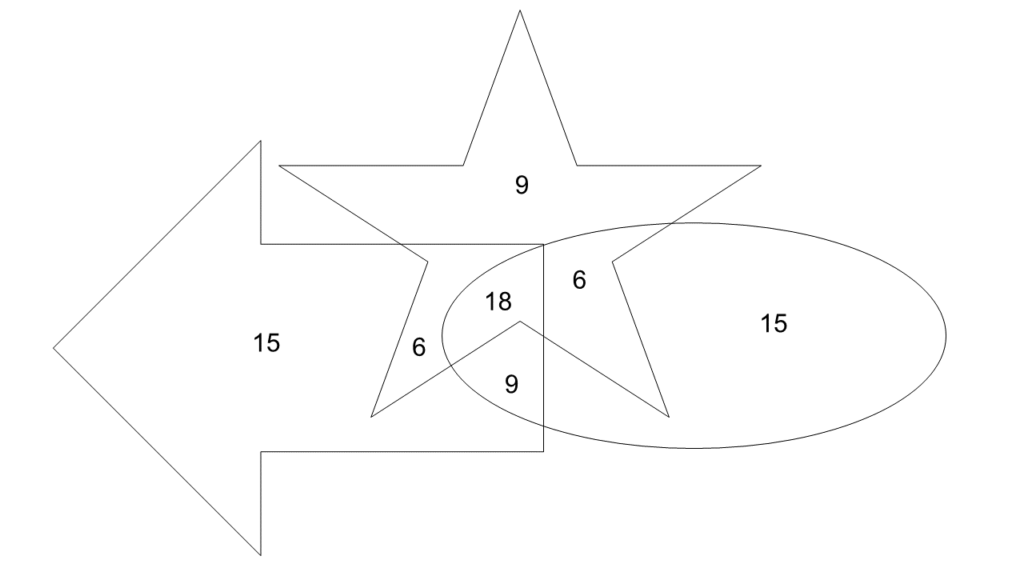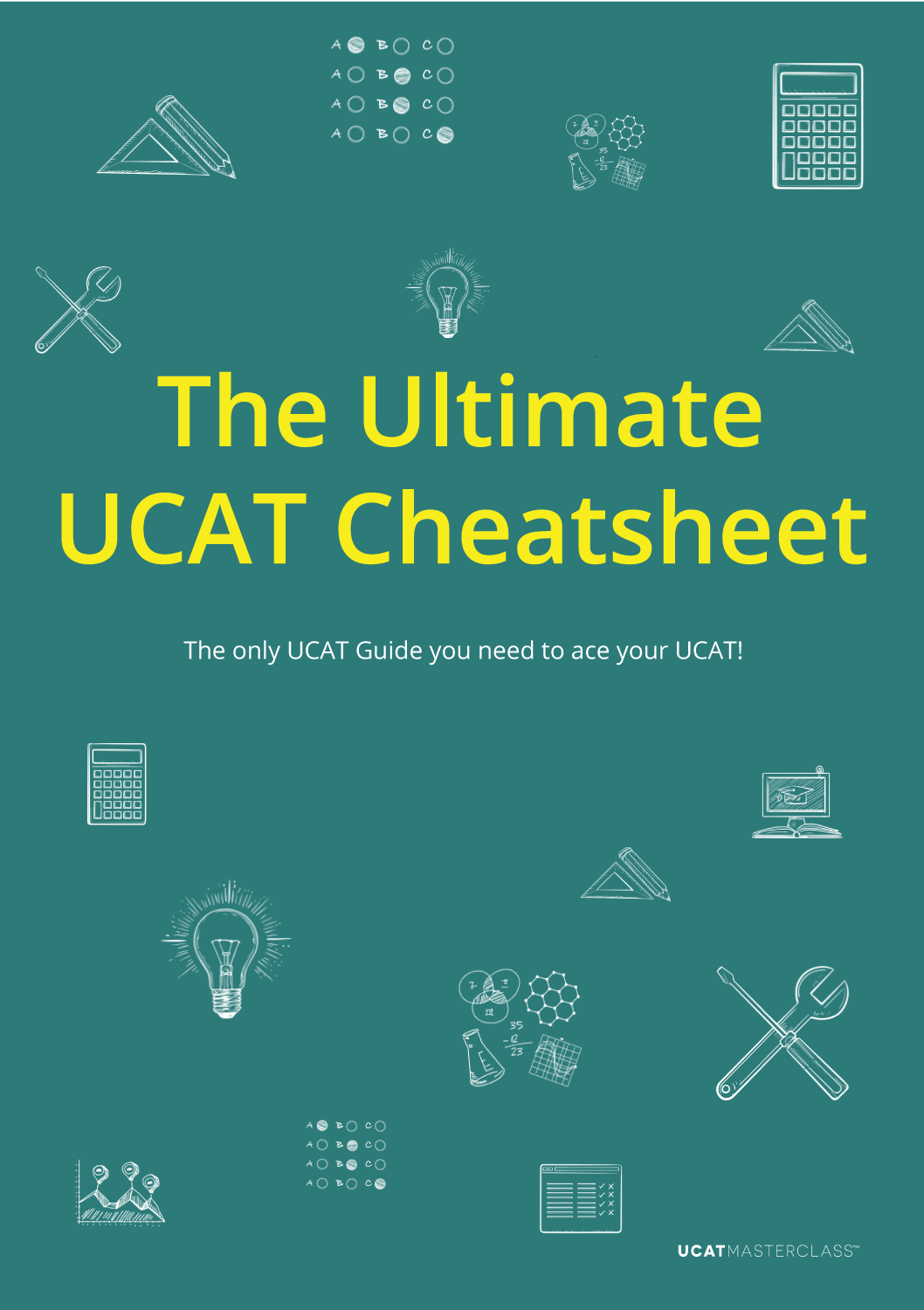UCAT Advice Decision Making
UCAT Decision Making
The UCAT Decision Making Subtest
The UCAT Decision Making Subtest assesses your ability to make quick and appropriate decisions. In this article, we’re going to give you best strategies for acing it.
What is it?
As a health professional, you need to be able to identify patterns and make hypotheses based on abstract or incomplete information.
The UCAT Decision Making subtest measures your ability to apply logic to reach a conclusion, evaluate arguments and analyse data.
What is the structure?
The Decision Making subtest consists of 35 questions to be completed in 37 minutes.
| No. of questions | 35 questions |
| Time limit | 37 minutes |
| Time per question | 63 seconds |
| Time pressure score | 7/10 |
The Decision making subtest contains 6 question types that always appear in the same order.
What is the answer format?
In the Decision Making subtest, you will face two types of answer format:
- Multiple-choice: Four answer options where only one option is correct.
- Unique: Each of the multiple-choice options will be a unique response.
- Yes / no: Two of the multiple-choice options will be “yes” with an attached justification and two of the multiple-choice options will be “no” with an attached justification. You must choose the correct justification.
- Yes/no conclusions: Respond to five statements, by selecting ‘Yes’ if the statement follows or ‘No’ if the statement does not follow from the information given. There may be more than one correct answer and each question is worth up to 2 marks. One to three statements will follow from the information given (most commonly two) and should be answered with ‘Yes’. The rest of the statements should be answered with ‘No’.

Want a UCAT cheatsheet in your pocket?
The 6 UCAT Decision Making Question Types
These questions always appear in the same order in the Decision Making subtest.
| Question type | Description | Answer format | No. of questions |
| Syllogisms | You will be required to evaluate whether each of a series of conclusions arises from a given set of facts. | Yes / no conclusions | 4-5 |
| Logic puzzles | You will be required to take one or more steps of deductive reasoning based on the information presented to arrive at a conclusion. | Multiple choice (unique) | 4-5 |
| Strongest argument | These items ask you to evaluate arguments for and against a particular solution to a problem. They are usually about a public issue or a topical passage. | Multiple choice (yes / no) | 4-5 |
| Inference | You will be presented with information in various formats (written passages, graphs, charts, etc.) and will be required to interpret this information in order to determine which conclusions follow. | Yes / no conclusions | 4-5 |
| Venn diagram | You will be required to interpret a Venn diagram or construct a Venn diagram from the information provided. | Multiple choice (unique) | 6-7 |
| Probabilistic reasoning | You will be presented with a very short passage containing statistical information. You will be asked to select the best response to the question. | Multiple choice (yes / no) | 4-5 |
| Total | 29 |
UCAT Decision Making: Syllogisms
In this type of question, you will exercise skills of deductive reasoning to make an assessment of whether a series of conclusions can result from a given set of propositions. Syllogisms are about applying rules that are initially given to you to new information. A simple example may be that you are given a statement:
“On the farm, all horses are animals; all animals have four legs.”
You will, then, need to make a logical deduction about that statement:
For example, you would logically conclude or deduce that “all horses have four legs”.
Example of a UCAT Deductive Reasoning syllogism question
A school has senior students and junior students. Some of the senior students play an extracurricular sport on the weekend. The rest of the students are participating in a volunteering day.
Place ‘Yes’ if the conclusion does follow. Place ‘No’ if the conclusion does not follow.
- All the junior students are participating in a volunteering day.
- None of the senior students are participating in a volunteering day.
- If a student plays an extracurricular sport on the weekend, they must be a senior student.
- If a senior student is participating in a volunteering day they must not play an extracurricular sport on the weekend.
- None of the students who are participating in a volunteering day play an extracurricular sport on the weekend.
Answer:
1st conclusion – Does follow because it states ‘that the rest of the students’ (as opposed to senior students who play am extracurricular sport on the weekend) are participating in a volunteering day.
2nd conclusion – Does not follow because there could be senior students who do no not play an extracurricular sport on the weekend that are participating in a volunteering day.
3rd conclusion – Does not follow as there is not enough information provided to conclude this; some junior students may play an extracurricular sport on the weekend.
4th conclusion – Does follow as it is stated ‘the rest of the students are participating in a volunteering day’ – the rest as opposed to the senior students who play an extracurricular sport on the weekend.
5th conclusion – Does not follow as some of the junior students participating in a volunteering day may play an extracurricular sport on the weekend.
UCAT Decision Making: Logic Puzzles
Logic puzzle questions require you to take one or more steps of deductive reasoning based on the information presented to arrive at a conclusion. The answer format is multiple choice and there is only one correct answer.
Some common types of logic puzzle questions include:
- Geographical scenarios, where you are required to understand where things are positioned relative to each other
- Sequencing questions, where you are required to arrange different elements in an order (e.g. a sequence of people in a queue)
- Matching questions, where you are required to match different elements to each other (e.g. different pieces of clothing to different colours)
- A mixture of the above!
Example of a Logic Puzzle question
Christine, Elle, Graham, Ian, Kane and Matthew are the only people in a line for movie tickets. Christine and Elle are the only girls.
There are three boys between the girls. Graham is between two boys.
Christine is ahead of Elle in the line for movie tickets. Elle is just behind Matthew.
There are three people between Ian and Matthew.
Which of the following statements is true?
- Ian is two places ahead of Matthew.
- The first person in the line for tickets is a girl.
- The fourth person in the line for tickets is Kane.
- Graham and Christine have one person between them.
Answer:
Correct response: D
From the information given, the order of the line is: Ian, Christine, Kane, Graham, Matthew and Elle.
A is incorrect as Ian is first and Matthew is fifth. There are three people between them.
B is incorrect as the girls are second and sixth in the line. Ian, a boy, is first in line.
C is incorrect as Graham is the fourth person.
D is correct as Kane is between Graham and Christine.
UCAT Decision Making: Strongest Argument Questions
Strongest argument questions require you to evaluate arguments for and against a solution to a problem.
This type of question aims to assess your evaluation skills to determine the strength of the presented arguments and the soundness of assumptions underlying these arguments. You will have to dispel any predispositions about your beliefs and look at only the information presented that will determine which is the best possible answer, or the strongest valid conclusion.
Example of a Strongest Argument question
Should there be a limit on the amount of plastic that restaurants can use in order to reduce pollution in our oceans?
- Yes, restaurants should be doing their bit for the ocean and the environment.
- Yes, restaurants, particularly takeaway and fast food shops, produce a large amount of plastic daily.
- No, the effect of plastic on the pollution in oceans is negligible compared to other factors.
- No, placing a limit on the amount of plastic used by restaurants is unreasonable and will cause local businesses to suffer.
Answer:
Correct response: C
Option A is incorrect because it is too general and does not explain whether the reduction of plastic will reduce pollution in our oceans.
Option B is incorrect because it does not address the concern of the question – ocean pollution.
Option C is correct because it addresses the concern of the question – whether limiting the amount of plastic used would reduce ocean pollution. This argument explains that there are other factors that are much larger contributors to ocean pollution and the effect of plastic on oceans is negligible in comparison to these factors.
Option D is incorrect because it is opinionated rather than factual and does not address the concern in the question of ocean pollution.
UCAT Decision Making: Interpreting Information Questions
In interpreting information questions, you will be presented with information in a textual and / or visual (charts, graphs, table data) format. You will be required to draw conclusions and make logical inferences from the information provided.
There are two types of interpreting information questions in the UCAT Decision Making subtest:
- Interpreting textual information – these require you to draw logical inferences or conclusions from passages of text. Some of the information presented may be numerical or statistical.
- Interpreting visual information – these will present you with numerical data in the form of a table or chart and ask you to draw logical inferences or conclusions from the information.
Example of an Interpreting Information question
The wealth effect is an economic theory that posits that people spend more money as the value of their assets rise, even if their income and costs stay the same. Proponents of the wealth effect theory argue that people have increased ‘consumer confidence’ when the market is trending upwards and the value of their investments rise. These investments could include property, stocks, or simply money put into a long-term, high-interest bank account. Critics of this theory believe that the effect has more to do with correlation, rather than causation. They propose that increased spending leads to increases in the value of assets.
- People spend more when there is increased consumer confidence.
- People spend more money as a result of an increase in the value of their assets.
- Increased consumed spending and a rise in asset values often occur simultaneously.
- An asset can decrease in value.
- Money can be an investment.
Answer:
1st conclusion – Does not follow because the passage says ‘people spend more money as the value of their assets rise’ and ‘people have increased ‘consumer confidence’ when the… value of their investments rise’. Although this suggests that both may happen at the same time (when values of assets rise), this may not always be the case.
2nd conclusion – Does not follow because the wealth effect, the economic theory that people spend more money as a result of an increase in the value of their assets, is not proven.
3rd conclusion – Does follow because even critics of the wealth theory acknowledge that there is a correlation between increased spending and increases in the value of assets.
4th conclusion – Does not follow because while this may be true, it cannot be inferred from the passage. The passage only talks about potential increases in asset values.
5th conclusion – Does follow because the passage states that investments include money put into a long-term, high interest bank account.
UCAT Decision Making: Venn Diagram Questions
There are three subtypes of Venn diagram question you may be asked in the UCAT Decision Making subtest.
- Given a Venn diagram, you will be asked to choose the one single best conclusion from a list of statements.
- You will be presented with a passage of information that you can interpret as a Venn diagram. You will then be asked to choose the one single best conclusion from a list of statements
- You will be provided a list of statements where you need to choose the Venn diagram that represents the information correctly.
Example of a Venn Diagram question
A company held a series of team-bonding events both out of the office and in office. All of these events are represented in the diagram.
The arrow represents the events that the company organised internally. The star represents the evening events that the company held. The oval represents events that were held out of the office.

Which of the following must be true?
- Most of the company’s events were not evening events.
- The company organised 21 events externally.
- The company held more events in the office than out of the office.
- The company internally organised three times as many evening events out of the office as evening events in the office.
Answer:
Correct response: D
The company internally organised 18 evening events that were out of the office (overlap between arrow, star and oval). They internally organised 6 evening events in the office (overlap of arrow and star but not oval). Therefore, option D is correct.
Option A is incorrect. The company held a total of 6 + 6 + 18 + 9 = 39 evening events (star) and a total of 15 + 9 + 15 = 39 non-evening events (not star). Thus, there were not more non-evening events.
Option B is incorrect. The number of events that the company organised externally (not arrow) is 15 + 6 + 9 = 30, not 21.
Option C is incorrect. The total number of events held out of the office (oval) is 15 + 6 + 18 + 9 = 48, whilst the total number of events held in the office (not oval) is 9 + 6 + 15 = 30. The company held 18 more events out of the office than in the office.
UCAT Decision Making: Probability Questions
Probability questions test your knowledge and understanding of how to calculate probabilities. You will be presented with a short passage containing statistical information and asked to select the best response to the question.
Example of a UCAT Probability question
There are two food contamination tests to detect a bacteria.
When the bacteria is present, Test A is positive 85% of the time and Test B is negative 1% of the time.
When the same food contamination sample is tested repeatedly, Test A gives the same result 99 out of 100 times and Test B gives a different result one out of 100 times.
Considering only the accuracy and precision, is Test B a better test choice?
- No, Test A has a higher accuracy and precision.
- No, Test A has 99% precision as compared to 1% for Test A.
- Yes, Test B has 99% accuracy as compared to 85% for Test A.
- Yes, Test B has a higher precision as it almost always gives the same result.
Answer:
Correct response: C
This is one of the most common types of probability questions. For these types of questions it helps to draw a table like the following:
| Accuracy – correct positive | Precision – same result | |
| Test A | 85% | 100% – 1% = 99% |
| Test B | 99/100 = 99% | 99/100 = 99% |
From this table, we can see that Test B is better because it has a higher accuracy than Test A. The precision is the same for both tests.



